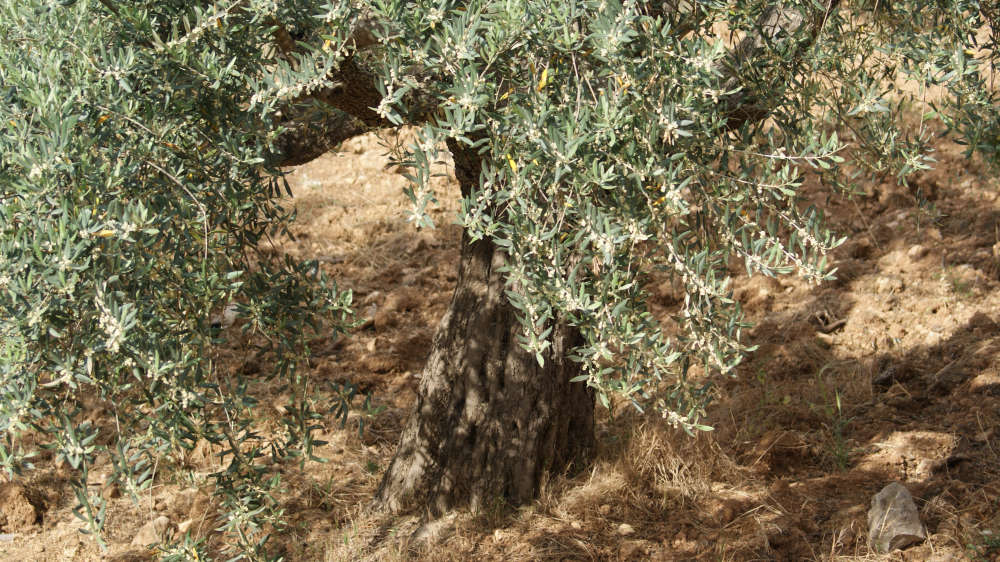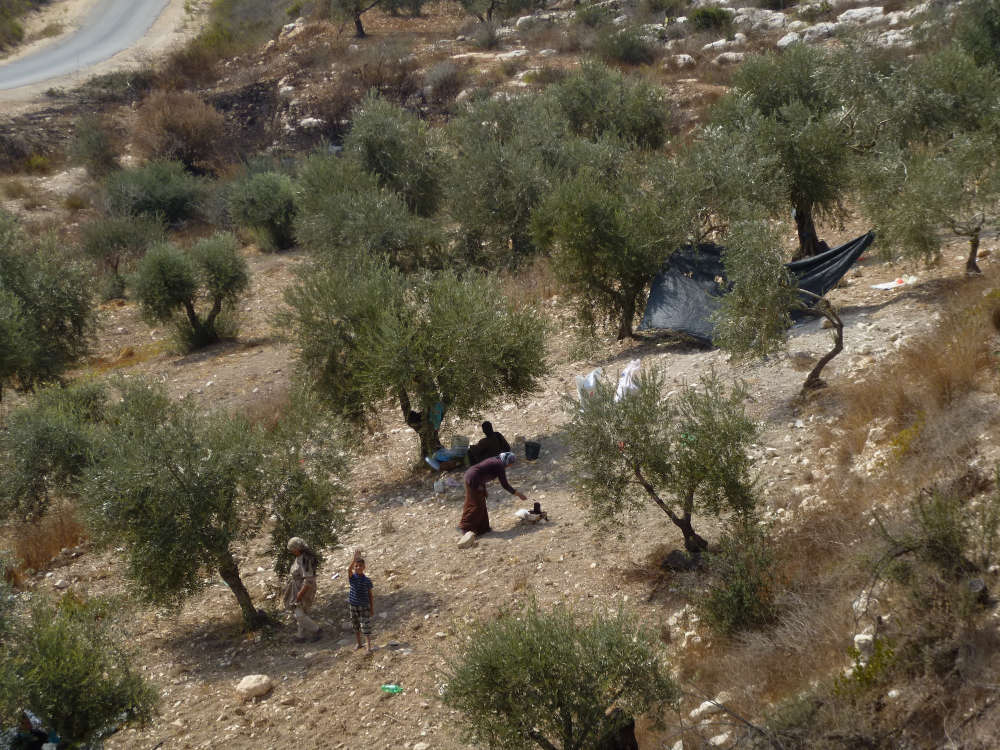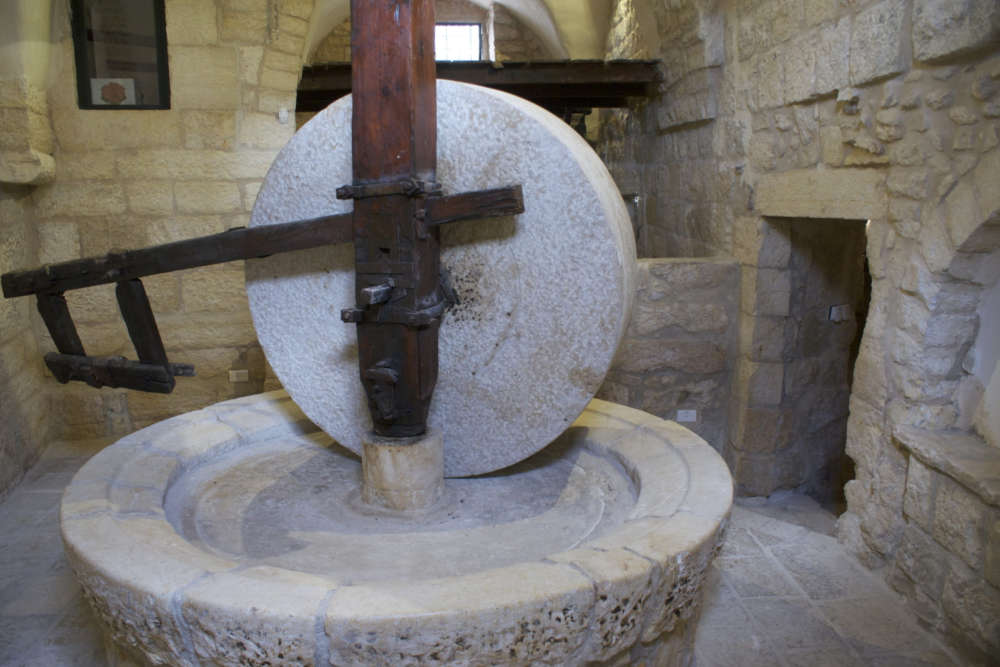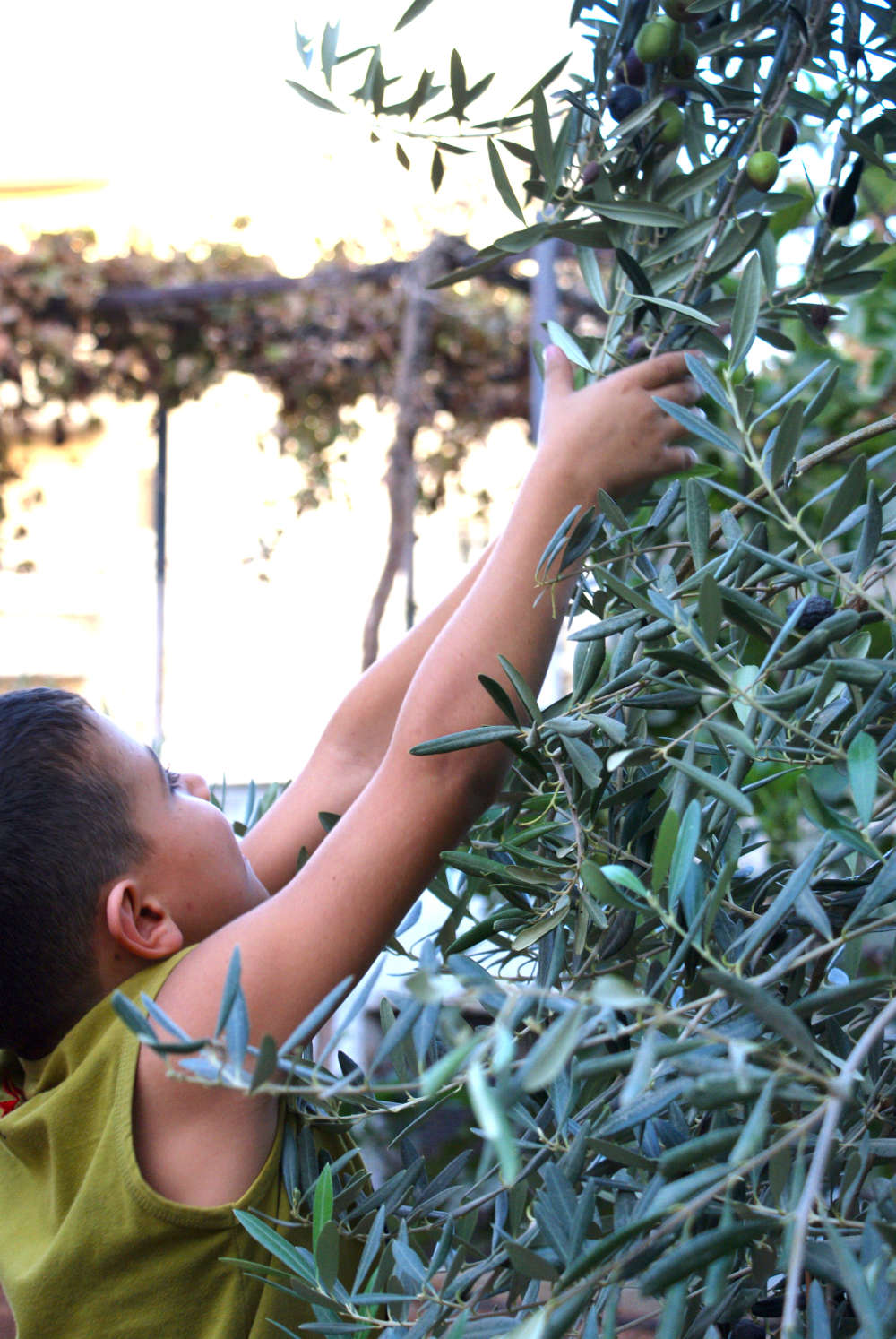In Palestine, the olive tree is valued for its historical presence, aesthetic value, and symbolic meaning, as well as for its economic importance. Most of the Palestinian rural landscape is covered with stone terraces dotted with olive trees. Some of the foundations of these agricultural terraces might date back thousands of years. The Canaanites (3300–1000 BC) are known to have used the same agricultural technique. What is more, old stone olive-oil presses have been excavated across the country, offering proof of the area’s ancient heritage of olive harvesting.
The olive tree is hardy and long-lived. Some very old olive trees can be found across Palestine, and their trunks are wide, twisted, and full of roomy hollows. Some claim that Al-Badawi, a 5,000-year-old olive tree that grows in Al-Walajah Village, is the oldest in the world.
The olive harvest (mid-October till mid-November) has been one of the most celebrated seasons in Palestine. Schoolchildren and university students are usually given a holiday to join their families in olive picking. Together they take to the hills and valleys where their olive trees grow. Young men pick olives from the tops of the trees and then drop them for women and children to collect. Harvesters often sing and joke, which helps them finish the difficult job.
Many families who have chosen a modern lifestyle and live in bigger cities still might own agricultural lands and fields in their ancestral villages. They would gather there annually to pick their olives together. However, olive trees are also found in the Palestinian cities themselves. Even townspeople who live in modern houses like to have a couple olive trees in their yards. They also engage in picking and pickling their olives.
Visitors to Palestine are welcome to experience the olive harvest, working side by side with the local hosts. There is always a need for extra hands, especially when the farmlands happen to be located in close proximity to Israeli settlements or military zones. The owners often have no access to their lands except for very short periods of time when they are granted permission. In such circumstances, the help of volunteers allows the landowners to harvest their olives quickly, thus preventing the crops from going to waste. Helpers are often generously thanked in the form of a delicious traditional meal.
After the olives are picked, they are either pickled or pressed in order to obtain the precious olive oil – both are integral elements of the Palestinian diet. In former times, oil was produced by heaping the olives into a great stone basin to be crushed with a millstone that was usually turned by a mule or a donkey. This gave rise to the popular saying: men a-shajar ilal-hajar, from the tree to the stone (من الشجر إلى الحجر). To extract even more oil, the pulp was then put into flat baskets that were piled on top of each other and pressed with a heavy screw. Even though with time the stone presses were modernized and powered by electricity, the traditional way of pressing olives remains a time- and energy-consuming process. Nowadays, many people choose to press their olives in modern machines.
The old animal-powered presses are mostly preserved in museums, such as Al-Bad Museum on Bethlehem’s Al-Najajra Street.
To learn more about harvest-related seasons and festivals, visit our website at www.visitpalestine.ps, or contact the Visit Palestine Information Center in Bethlehem via info@visitpalestine.ps or (02) 277-1992.






